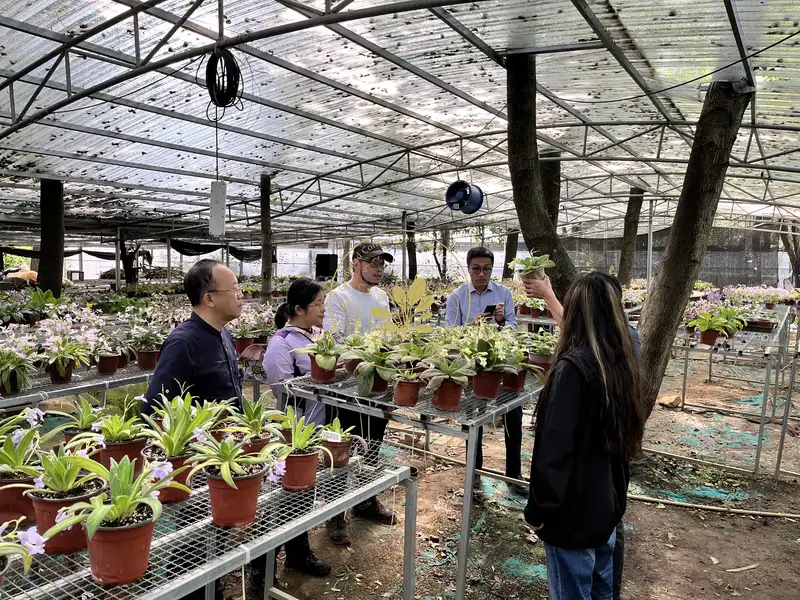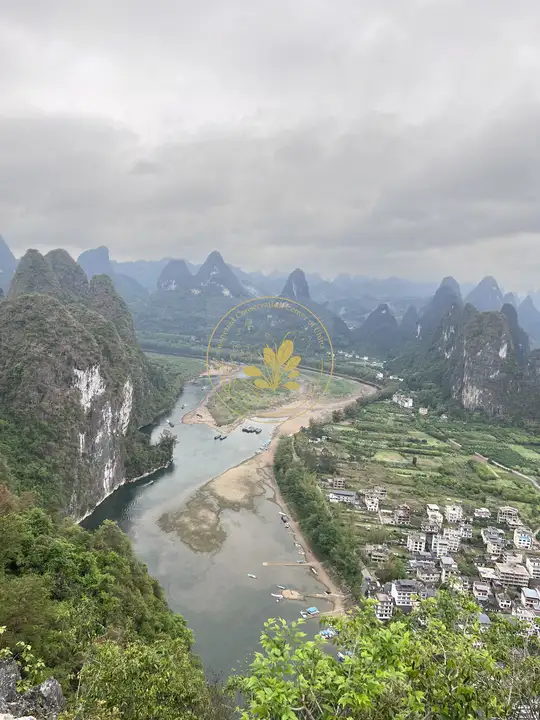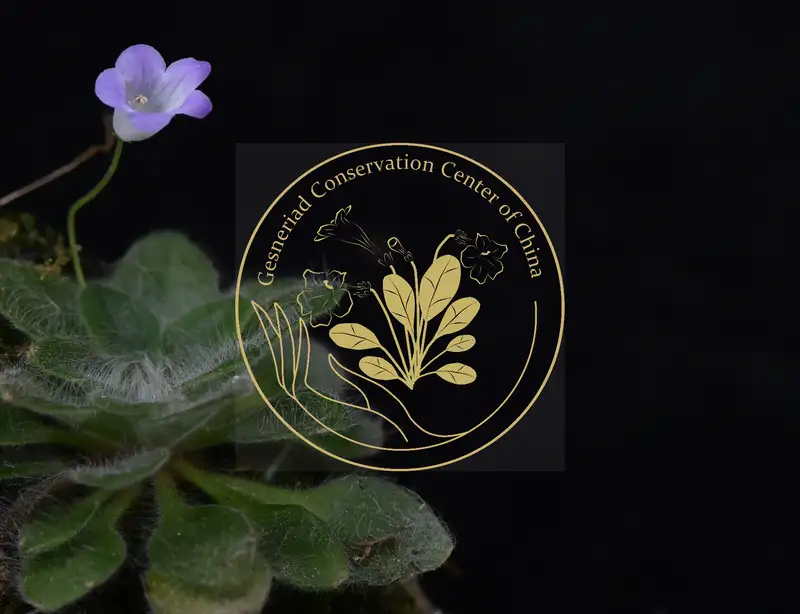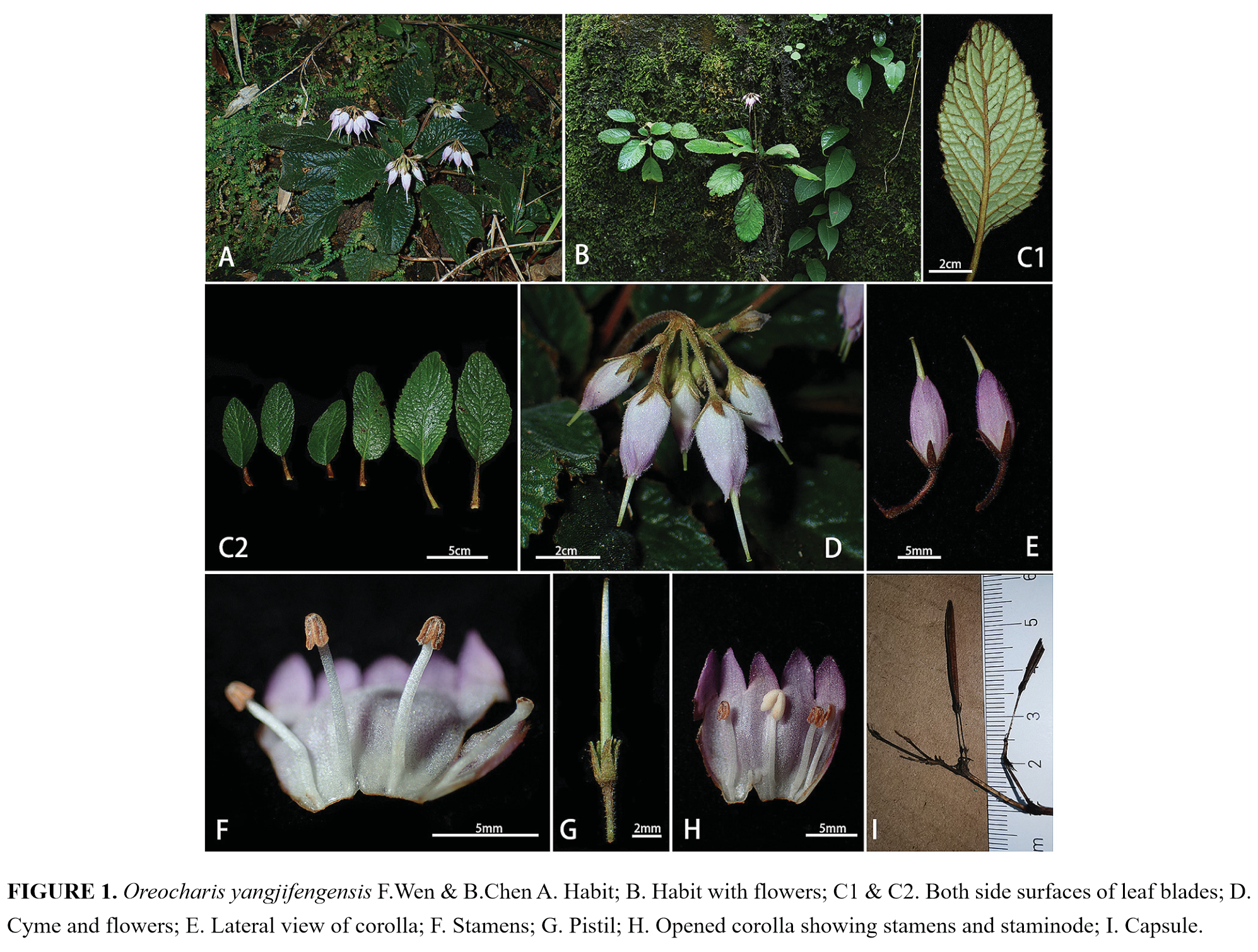No. 14 PENG-WEI LI, BO PAN, AJ HARRIS, WEI-BIN XU, MING-TAO LIU & MING KANG
Primulina clausa, a new species of Gesneriaceae from northern Guangxi, China
Phytotaxa 510(2): 187-192
ABSTRACT
A new species of Gesneriaceae, Primulina clausa P.W.Li & M.Kang was described, which occurs in the karst areas of northern Guangxi Zhuang Autonomous Region of China. The new species is morphologically similar to P. obtusidentata (W.T.Wang) Mich.Möller & A.Weber, but can be readily distinguished by its short and prostrate peduncle, slightly unfolded bracts, appressed sepals, glabrous anthers, parietal placenta, and nearly straight capsules.
Original article link: https://www.mapress.com/pt/article/view/phytotaxa.510.2.8

FIGURE 1. Photographs of Primulina clausa (A–J) with comparison of P. obtusidentata (K–P). (A) Habitat; (B, K) flowering plant, showing prostrate and vertical peduncles, respectively; (C, L) inflorescence, showing slightly unfolded and spreading bracts, respectively; (D) bracts; (E) side view of corollas; (F, M) front view of corolla, showing similar stigma shape; (G) longitudinal dissection of corolla; (H, N) capsule, showing nearly straight capsule with short pedicel and falcate capsule with long pedicel, respectively; (I, O) stamen, showing glabrous and villous anthers, respectively; (J, P) transverse section of middle part of ovary, showing parietal and axile placenta, respectively. Scale bars: B, 5 cm; C–E, L, N, 2 cm; F–H, M, 1 cm; I, O, 1 mm; J, P, 0.5 mm; K, 10 cm. Note: The scanning electron microscopy illustrations (I–J, O–P) were acquired following Dong et al. (2018).
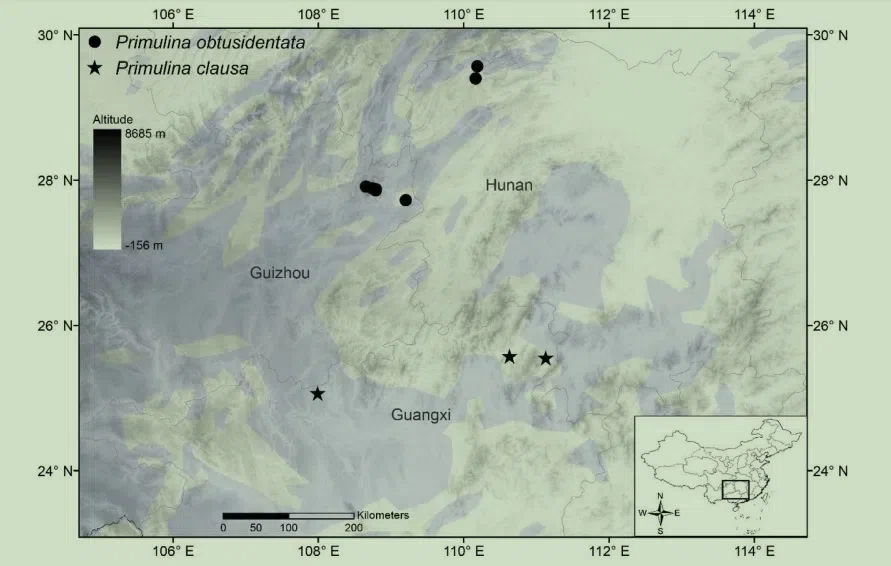
FIGURE 2. The known geographical distribution of Primulina clausa and P. obtusidentata. The light blue shadow indicates main areas of karst based on GIS datasets from https://www.fos.auckland.ac.nz/our_research/karst/#karst5.



